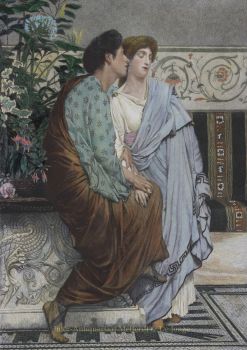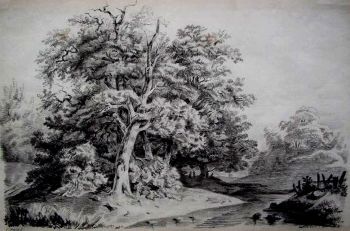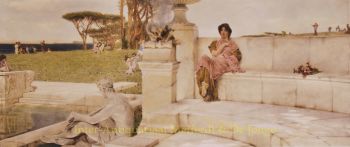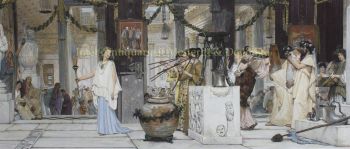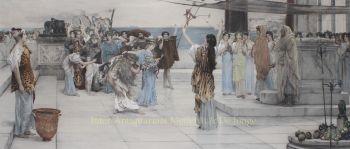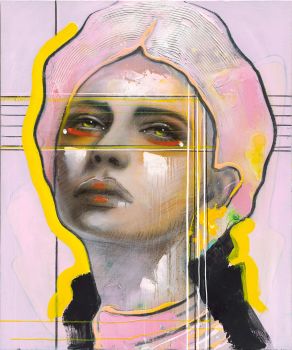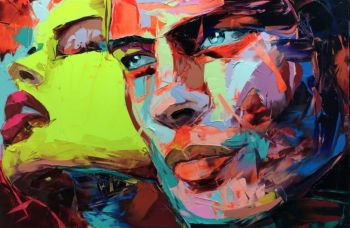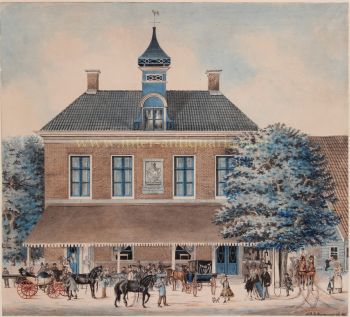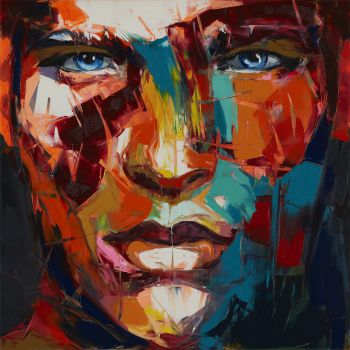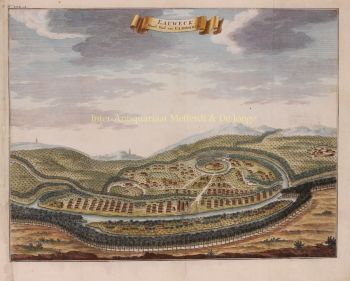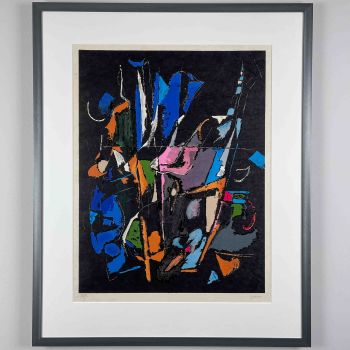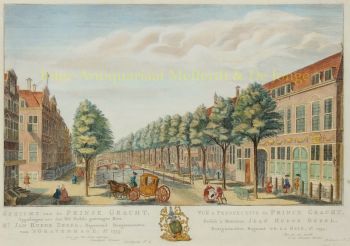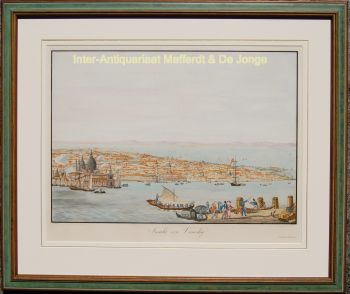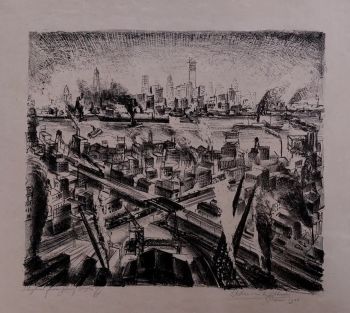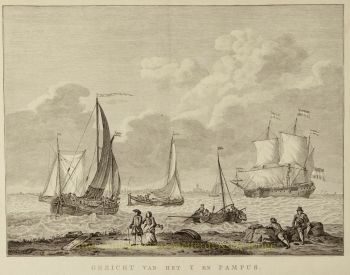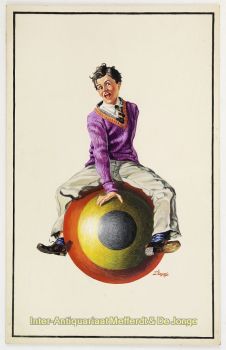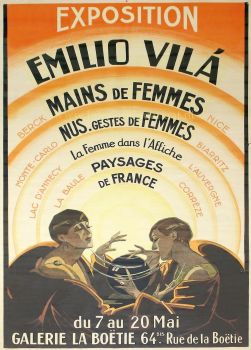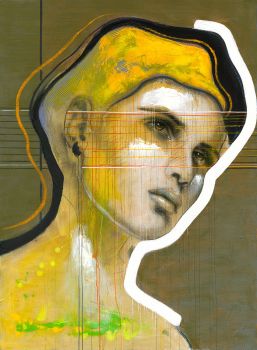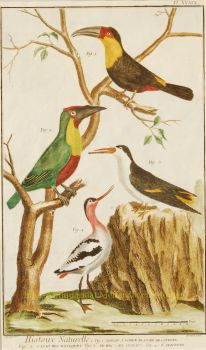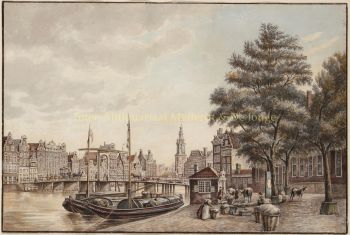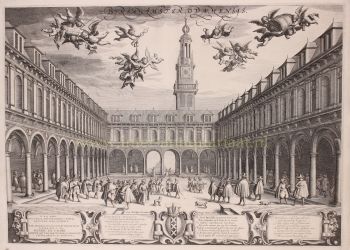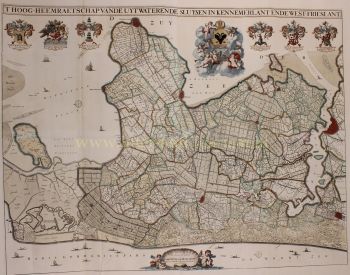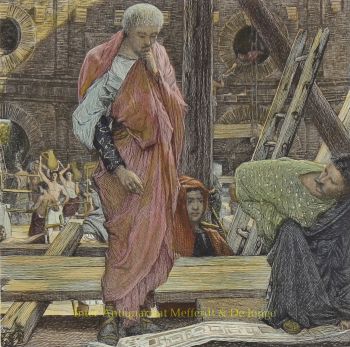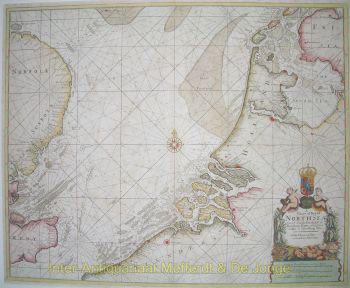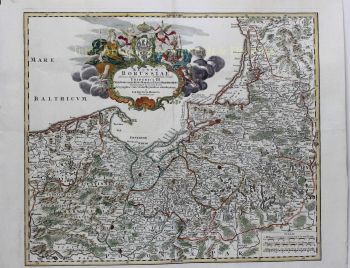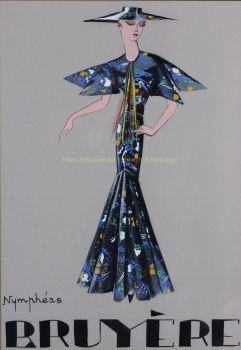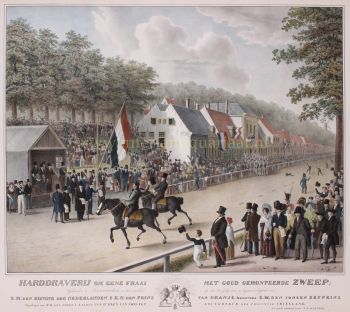The Sculpture Gallery 1877
Lawrence Alma-Tadema
€ 2.450
Inter-Antiquariaat Mefferdt & De Jonge
- About the artwork
A Sculpture Gallery, steel engraving from 1877 by Auguste Blanchard after the painting (Opus CLVII) by Sir Lawrence (Lourens) Alma-Tadema. Later hand-coloured. Dim.: 50 x 39.5 cm. Roman art lovers are looking at a marble statue being turned around by a slave. The representation is the counterpart of "A Picture Gallery". The figures are Alma-Tadema himself, seated on the bench, and standing next to him are his wife Laura and their children Anna and Laurense, whom he gestures not to come too close to the statue. Also sitting on the bench are Ellen Gosse and her husband Edmund (Alma-Tadema's brother-in-law, Sir Edmund William Gosse, a renowned art critic of sculptures). Several famous statues from antiquity surround the group. For example, on the left is a statue of the young Hercules fighting a snake from the Museo Nazionale in Naples (Hercules was the illegitimate son of Zeus. His wife Hera was jealous of the adultery and sent a snake to the cradle, which was strangled by the child prodigy Hercules while playing). The marble table on the right is from the Casa Rufi in Pompeii, on top of which is a silver bowl that was excavated near Hildesheim (D) in 1868 (and that appears in 15 more of Alma-Tadema's paintings). The bust at the back left of Pericles comes from the Vatican. The statue of the seated woman on the right represents Agrippina (wife of Claudius and mother of Nero) and is in the Capitoline Museums. The large bronze bowl in the centre is a tazza (originally a drinking vessel) composed by Alma-Tadema and depicting the sea monster Scylla, the former nymph with the torso and head of a woman with dog's heads protruding from her sides. In the rear room, there is a collection of bronze statuettes, large candelabras and hanging lamps; luxury objects similar to those found in many Pompeian houses and offered here in this art gallery. A Sculpture Gallery was the last in a series of works depicting galleries. After Alma-Tadema's trip to Rome (1875/6), he became less interested in depicting existing works of art. His growing knowledge enabled him to invent more and more objects himself. The painting won Alma-Tadema the gold medal of the Berlin Academy in 1874, which subsequently earned him the Prussian Order Pour le Mérite in 1881. Price: Euro 2.450,- (incl. frame)
- About the artist
Lawrence Alma-Tadema is one of the most highly renowned romantic artists of late 19th century Britain. He was born in the Netherlands as Laurens Tadema, to the family of the town notary. Later, as he tried to make his niche in the art world, he changed the spelling of his first name to the more English “Lawrence,” and included his middle name “Alma” as part of his surname, so he would be listed among the “A’s” in exhibition catalogues.
As a child, it was decided that Alma-Tadema would pursue the career of a lawyer, but he suffered a mental and physical breakdown when he was fifteen years old. He was diagnosed as consumptive, given a short time to live, and thus free to pursue a life of leisure and pleasure. Once left to his own devices, he decided to study art, as his mother had paid for art lessons in his earlier childhood and it was one of his interests. He regained his health and studied at the Royal Academy of Antwerp in 1852, where he won several respected awards. His first major work was exhibited in 1858, and it won much critical praise, and creating a sensation in the art world. By 1862, he set own in his own studio to pursue his individual career in art.
In 1869, Alma-Tadema lost his wife of six years to smallpox. Disconsolate and depressed, he ceased painting and his health was failing. Under the advice of his physician, he traveled to England for a medical diagnosis, where he was invited to the house of a fellow painter, Ford Madox Brown. It was here that he laid eyes on Laura Theresa Epps, who was 17 at the time, and fell madly in love with her. Alma-Tadema took advantage of the outbreak of the Franco-Prussian war to relocate to England, where he wasted no time contacting Laura and contracting her in private art lessons. It was during one of these lessons that Alma-Tadema proposed, and they were married shortly thereafter. Alma-Tadema was 34 years old, and the bride 18.
Alma-Tadema spent the next part of his life traveling through Europe, and enjoying the continued success of his paintings. As a man, his bursts of bad temper were eased by his extroverted, warm personality and sense of mischief. A perfectionist and obsessive worker, he also innovated a new numbering technique, which made it difficult for forgers to pass off unoriginal works. In his later years, although his artistic output decreased somewhat, he enjoyed continued success, eventually becoming one of the wealthiest painters of the 19th century. He was knighted in England in 1899.
In 1912, Alma-Tadema traveled to Germany to undergo treatment for stomach ulcer, and died in Germany at the age of 76. After his death, his work was mostly ignored. Due to the drastic changes taking place in art, Alma-Tadema’s artistic genius would not come into the public eye again until the 1960s. His meticulous work had since been used as source material for dozens of Hollywood movies.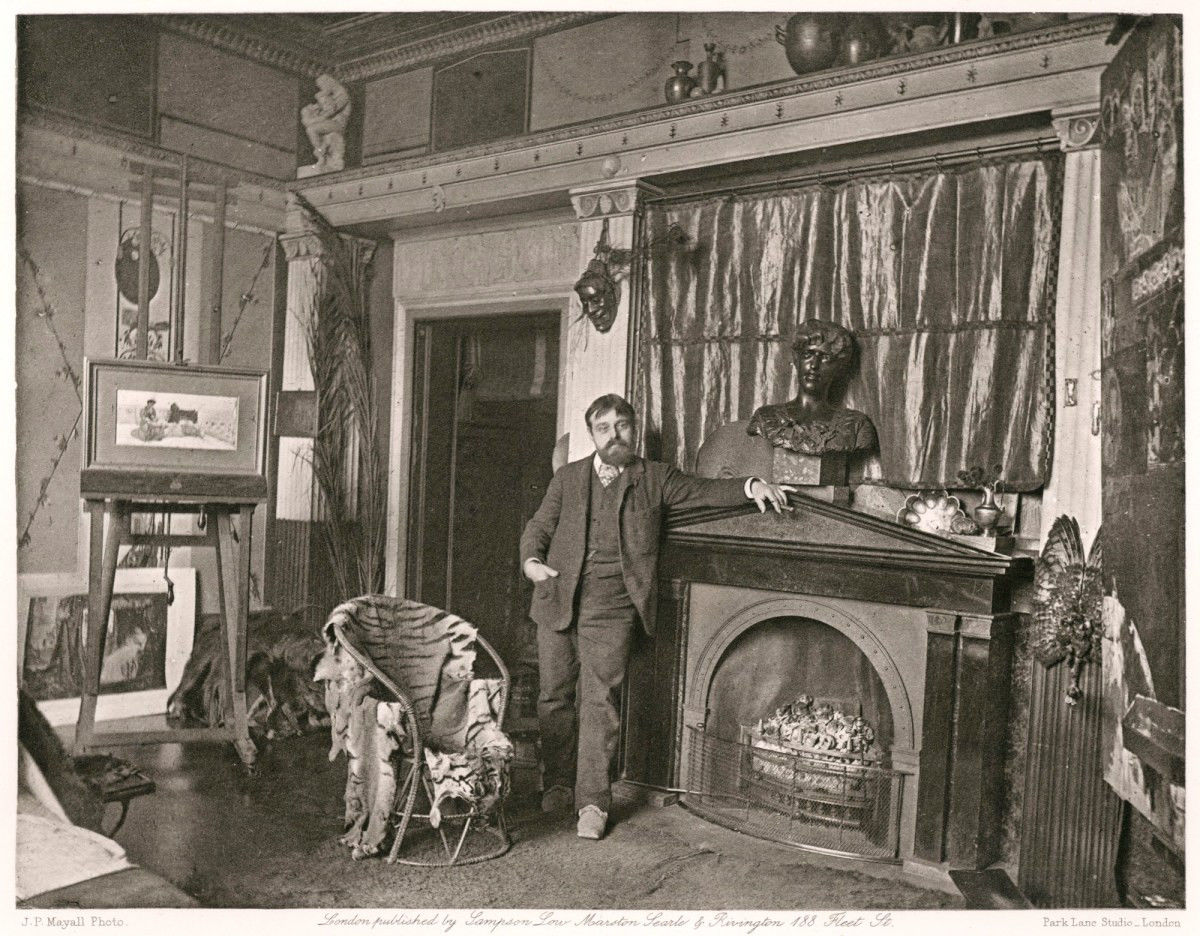
Are you interested in buying this artwork?
Artwork details
Related artworks
- 1 - 4 / 12
- 1 - 4 / 24
- 1 - 4 / 12






